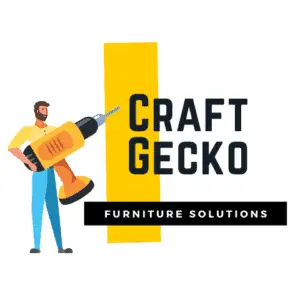Metal garden furniture can give your outdoor area a cozy look, and metal is famous for its durability; that’s why you don’t need to think much about its maintenance. But humidity can take its toll. Does metal garden furniture rust?
All metal garden furniture rust except for aluminum. You can delay rusting by keeping your furniture dry and applying anti-rust oils or coating. A layering technique called bluing is also helpful. If you see rusting, use baking powder, white vinegar, or potatoes to remove the stains.
Read on to learn more about how you can keep your metal garden furniture rust-free longer and what to do when rusting signs start to appear.
How To Prevent Rusting
There are a few ways to prevent rust on your beloved metal garden furniture and extend its lifespan:
Keep Your Metal Furniture Dry
Even if your garden furniture is water-resistant, you should always keep it dry because too much moisture can damage any material and ruin its appearance. If you have a protected area, store your furniture there. If not, wrap a waterproof cover around all your chairs and tables to shield them from direct sunlight and rain.
Apply Oil
Oiling or greasing can reduce friction and wear and tear in metal objects. It also creates a protective layer against rust, which improves the surface tension. A thin layer of oil doesn’t let moisture penetrate the iron and cause rust.
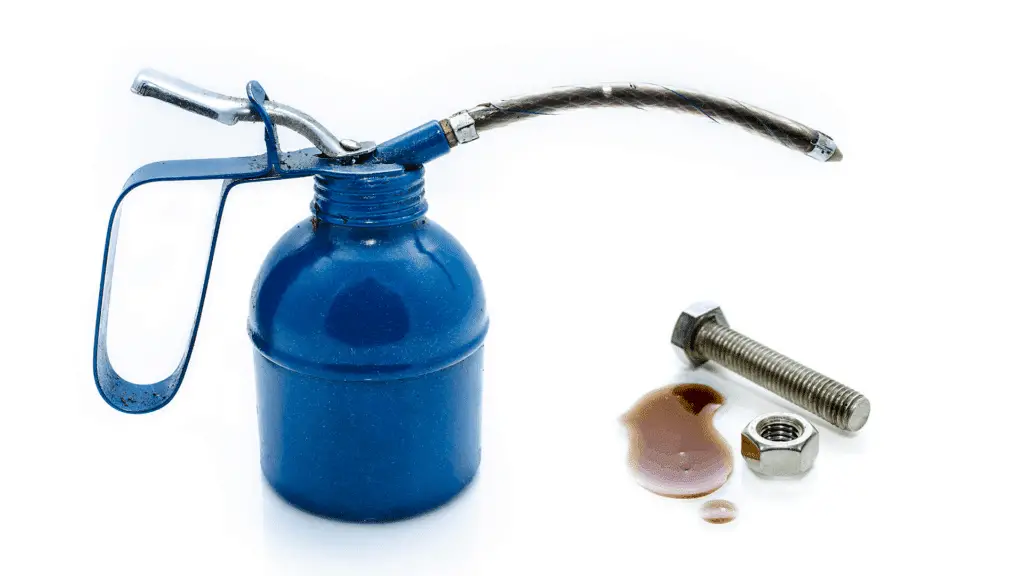
Vegetable oils such as olive and cress seeds oil and mineral oils such as petrolatum and paraffin are the best choices. These oils dry faster and create a more firm surface.
Clean Your Furniture Frequently
Clean your garden furniture at least three or four times a year. All you need is a mixture of warm water and a cleanser. Take a sponge or an old brush, and apply the solution to every nook and cranny of the objects. Use a hose to wash away the detergent, then let the metals dry.
Buy Rust-Resistant Alloys
Pure metals aren’t usually strong enough against rust and corrosion. That’s why manufacturers often use multiple metals in their products.
Alloys are mixtures of two or more rust-resistant metals, which together become stronger and harder.
Use Red Oxide Primer
Red oxide primer is an anti-rust coating that you can use for both rusted and bare metals. The primer is applied before a topcoat and provides a smooth base. It dries fast, so you can repaint it or apply the overcoat after 6 hours.
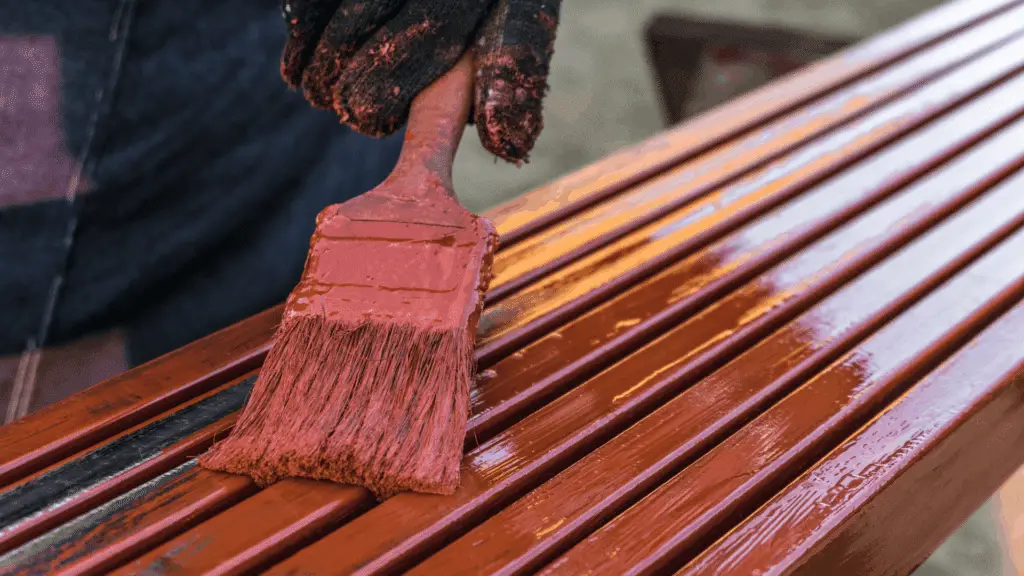
Keep in mind that it’s not suitable for nonferrous metals like aluminum, copper, or brass. Before using red oxide primer, clean the surface from oil or grease and remove flaking materials with sandpaper. The red oxide primer price is reasonable, and you can afford it from gardening stores or building suppliers.
Bluing
Bluing involves adding a layer of black oxide or magnetite (a corrosion-resistant material) that protects metals from rusting. Its name comes from the blue-black appearance of the protective layer.
Oxide primer is just an undercoat for the metal, while bluing colors the metal itself. Bluing is generally suitable for small parts or touch-ups, but you can use a red oxide primer on any size metal.
There are two types of bluing for repairing metal furniture. You can do both at home; however, rust bluing can be a little hard and expensive.
- Rust bluing: Rust bluing is a traditional method that uses an acid solution to rust the metal in a controlled way. By heating the rust, red oxide turns into black oxide. This process is repeated to rinse the excessive rust and form the desired metal finish. To perform the process, you need hot water, rust bluing solution, a degreasing solution, gloves (nitrile or latex), and a container to put the parts you want to blue.
- Cold bluing: Cold bluing uses water-soluble selenium dioxide and colors the metals in black or dark grey tones. It provides limited protection but can be a proper and easy choice for touch-ups. For this method, you need sandpaper, bluing solution, and cotton balls.
How To Remove Rust Stains
Despite homeowners’ best efforts to protect their metal garden furniture, they can’t avoid rusting and corrosion. Here are some household items you can use to remove rust stains:
Baking Soda
You can find sodium bicarbonate, commonly known as baking soda, in almost every home. This chemical compound is a good rust removal powder.

Mix baking soda with a bit of water to make a dough. Put a thin layer of the dough on the rusted metal and let it be for about 15-20 minutes. Now, scrub the surface with a scraper until the rust stains vanish.
White Vinegar
White vinegar has acidic and antibacterial properties, which make it a useful remedy for household cleaning. It also reacts with the rust and dissolves it.
You can add about half a cup of salt to make the solution to make it more effective. Rinse your metal furniture with vinegar for almost 10 minutes, then wipe off the stains with a scraper and a dry rag.
Coca-Cola
Coca-cola can dissolve and remove rust stains due to its carbonation and citric acid properties. It’s a valuable technique for removing persistent stains on various alloys and metals.
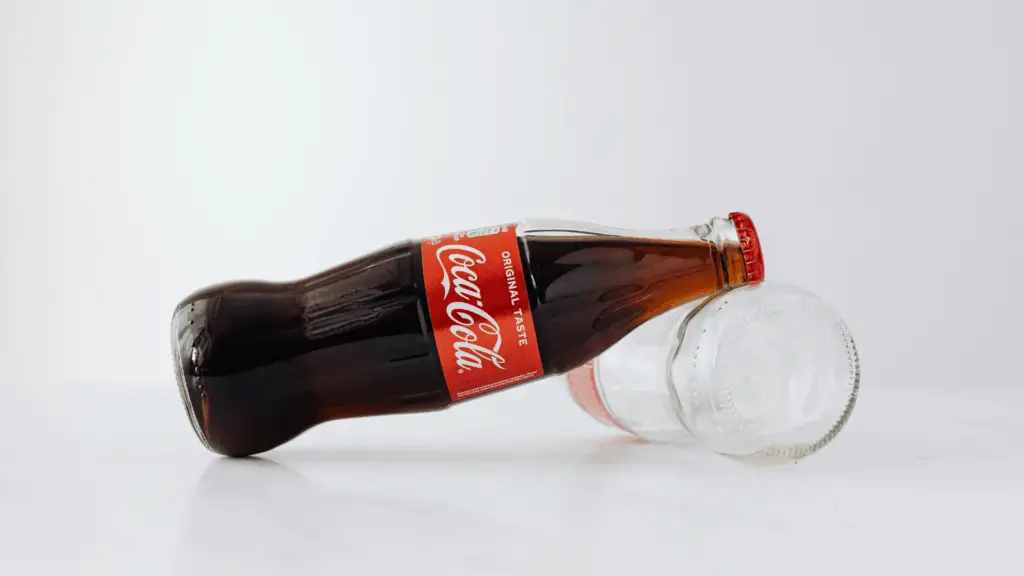
Pour Coca-cola on the rusted surface and clean it with a toothbrush or sponge. After a few minutes, the rust flakes will begin to peel off. Don’t forget to wash your hands after the process so that you don’t end up staining your clothes with the solution.
Potato
Use a potato to remove brownish rust spots. It contains oxalic acid that dissolves rust.
Cut a potato in half, add some salt or baking soda to it. Rub it firmly on the rust stains so that the chemical reaction can take place. Occasionally, slice the potato off and dip back the new cut. Once it finishes, rinse the surface thoroughly.
Salt and Lemon
You can use a lemon and some coarse salt to clean rust stains. Make a paste by squeezing a lemon and adding some salt or apply them to rusted surfaces separately. Salt acts as a scraper, and the acidity of the lemon washes rust flakes away. Leave the paste on the surface for two hours, then wipe it off.
Aluminum Foil
It might seem weird, but aluminum foil is a helpful rust removal tool. The aluminum oxide acts as an abrasive and removes rust. Tear off the foil, dip the pieces in soapy water or vinegar, and rub them on rusted surfaces. Use a wire brush to get a better result. In the end, wipe the rust with a dry cloth.
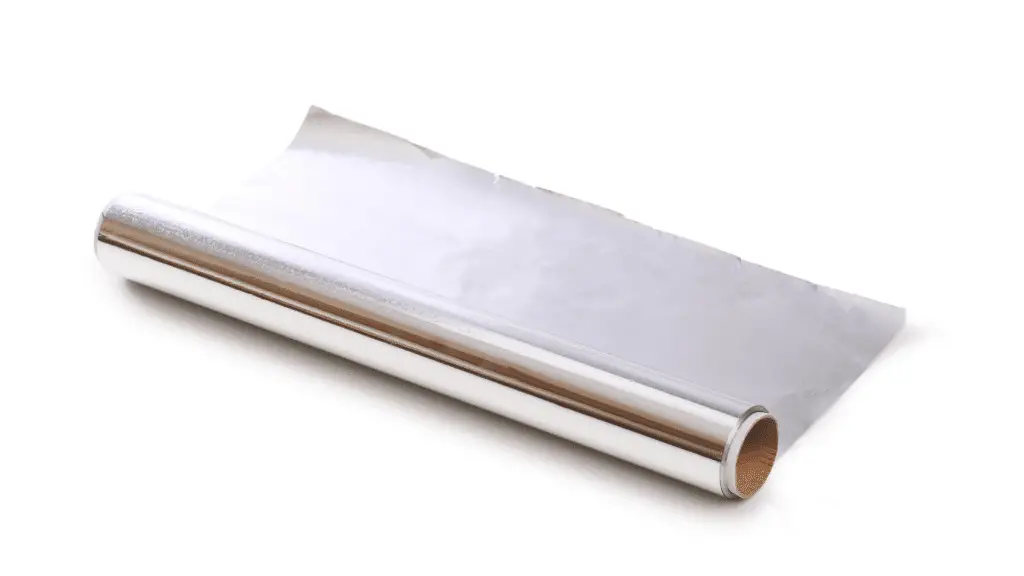
Outdoor Furniture Material
It’s a good idea to consider other furniture materials based on the weather outside. You should understand each material’s strengths and weaknesses and decide which is the best for your residential.
- Plastic: Plastic garden furniture is affordable and requires less maintenance. However, it’s often not as beautiful as metal, and it discolors quickly. So it would be best if you used dust sheets to keep it safe from sunshine.
- Wooden garden furniture: Wooden garden furniture is visually attractive, comfortable but costs more than plastic and metal. Its maintenance depends on the quality of the wood. For general care, clean it with warm soapy water.
- Rattan garden furniture: Rattan garden furniture is stylish, durable, and suitable for all weather. It’s also easy to look after. You can clean it with soap water. However, if its frame contains metals other than aluminum, it’s susceptible to rust and corrosion.
Final Thoughts
Rust and corrosion are naturally occurring processes that occur in humid weather. This phenomenon can affect your metal garden furniture and ruin its appearance. To make your metal garden furniture look clean and shiny, you should protect it from rust by keeping it dry, cleaning it, applying oil, bluing, painting, and buying alloying elements.
Nevertheless, you may see rust stains on your metal furniture. In that case, you can remove them with household items such as baking soda, white vinegar, coca-cola, potato, salt and lemon, and aluminum foil.
Sources
- Armor Protective Packaging: How to Prevent Rust: 9 Ways for Any Situation
- WD-40: How To Prevent Rust On Metal Furniture | Rust Prevention
- Bob Vila: How to Prevent Rust & Maintain Metal Outdoors
- Wikihow: 4 Ways to Blue Steel
- Hammer Down Range: Hot Versus Cold Bluing
- Abbey Supply: What is Bluing?
- Hunker: What Kind of Oil Should I Use to Remove Rust?
- Homeguides: Painting With Red Oxide Primer
- Homecrux: 7 Easy Ways of Removing Rust from Metal Furniture
- Homebase: How to care for & maintain garden furniture
- Ideal Home: How to clean and restore garden furniture
- Corido: Plastic, Wood or Metal Garden Furniture? Benefits Breakdown
- Whiskey Tango: Rust Bluing for the Home Hobbyist
